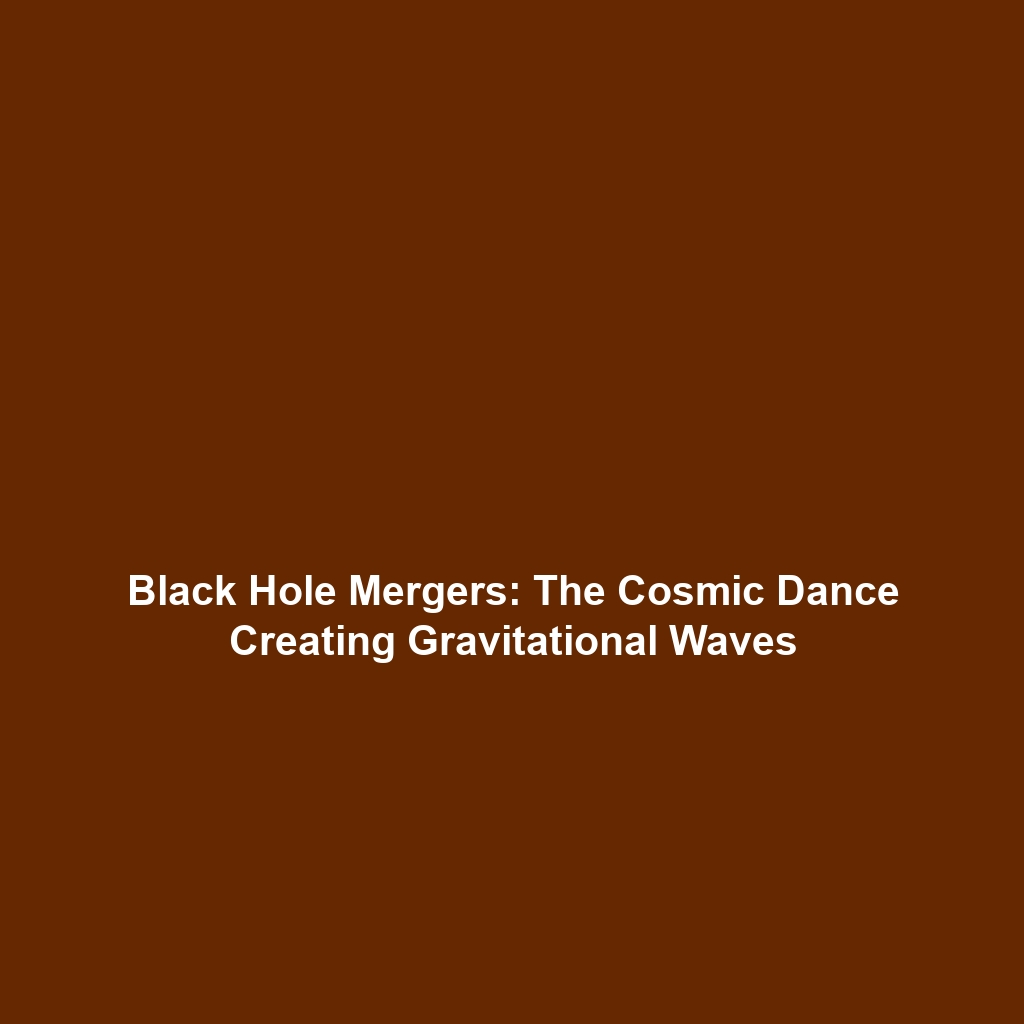Exploring M87: The First Image of a Black Hole
Introduction
In April 2019, the Event Horizon Telescope (EHT) collaboration unveiled the first-ever image of a black hole, designated M87. This monumental achievement in astronomy marked a significant milestone in our understanding of black holes and the mysteries of the universe. By capturing this image, researchers not only provided visual evidence of black holes but also sparked a new wave of interest and inquiry into these enigmatic celestial objects. This article delves into the key concepts surrounding M87 and its critical importance within the field of black hole studies.
Key Concepts
The Nature of Black Holes
Black holes are regions in space where the gravitational pull is so strong that nothing, not even light, can escape from them. They are formed from the remnants of massive stars that have collapsed under their own gravity. M87, located in the center of the giant elliptical galaxy M87, is a supermassive black hole with a mass estimated to be about 6.5 billion solar masses.
Event Horizon and Accretion Disk
The boundary surrounding a black hole, known as the event horizon, marks the point of no return. The image of M87 reveals a bright ring formed by the accretion disk—a swirling mass of gas and dust spiraling into the black hole. This groundbreaking visualization provides crucial evidence supporting the theories of general relativity and offers insights into gravity’s influence at astronomical scales.
Applications and Real-World Uses
The advancements made possible by the imaging of M87 have significant implications across various fields, particularly in astrophysics and cosmology. Key applications include:
- Validation of General Relativity: The findings support Einstein’s theory, helping to refine our understanding of spacetime.
- Astronomical Research: The techniques used in capturing the image have enhanced methods for studying distant celestial objects.
- Educational Tools: The image serves as a powerful educational resource, helping to engage the public in science.
Current Challenges
Despite the success of capturing M87, several challenges remain in the study of black holes, including:
- Technological Limitations: Current imaging techniques face difficulties in capturing higher resolutions.
- Data Analysis Complexity: Processing the vast amounts of data collected from observations requires significant computational resources.
- Understanding Black Hole Formation: The precise mechanisms behind black hole creation and growth are still not fully understood.
Future Research and Innovations
The future of black hole research looks promising, with numerous ongoing projects aimed at improving our understanding of these cosmic giants. Anticipated innovations include:
- Next-Generation Telescopes: Upcoming technologies, like the space-based Event Horizon Telescope, may provide even more detailed images of black holes.
- Enhanced Computational Models: Innovations in machine learning and data processing could revolutionize how we analyze black hole data.
- Theoretical Advances: Ongoing research aims to further understand the physics of black holes, potentially revealing new physics beyond current theories.
Conclusion
M87, the first-ever image of a black hole, has provided invaluable insights into the nature of these mysterious objects. Its implications stretch far beyond astronomy, influencing theories of gravity and the structure of the universe. Continued research and technological advancements promise to deepen our understanding of black holes in the years to come. For those interested in learning more, explore our articles on black hole formation and astrophysics breakthroughs to uncover the many layers of this fascinating subject.




